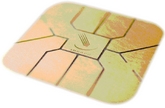Travelers embrace smart cards
The increasing popularity of traveling has encouraged the large community of travelers to embrace technologies – such as smart card technology – that will simplify their travel needs.

This end-user readiness has resolved some of the industry’s inertia in deploying new services based on smart card technology. A promising cycle has emerged that will generate wider network externalities through the application of innovative practicalities to this community of transit users.
New analysis from Frost & Sullivan anticipates that the transit application will witness 11 percent Compound Annual Growth Rate (CAGR) in smart card shipment until 2015. This growth will be driven by current smart card-based transit projects designed to extend the percentage of the world’s population that is currently living in cities running smart card-based transit projects.
Europe and megacities are hot spots for future smart card-based transit projects. The UN report on megacities states that city development requires transportation planning involving smart card-based transit payment solutions.
Furthermore, the use of smart cards has matured in Europe, setting the scene for more collaborative efforts with stakeholders in other industries. For instance, Europe is at a more advanced stage of NFC trials for m-payment purposes, including the use of NFC technology for mobile ticketing.
By recognizing the gaps, which have been left by disruptive new players such as telcos or retailers, smart card vendors can better act on an end- to-end vendor solution. They can fulfill the role of a system integrator, having understood the complexity of secure transactions, while operating within the context of the transportation and mobile sector.
Beyond the demand for smart cards and integrated chips, there remains the untapped demand for services and solutions to bridge the fragmented ecosystem. The emergence of payment for transportation has laid the groundwork for a wider adoption of smart cards with multi-applications. There have been several examples of contact and contactless transportation payment projects embarking in different parts of the world.
Trends indicate that the number of people holding a transit smart card will rise. This, together with the increasing sophistication in uses of smart card, represents a step towards a connected or smart city.